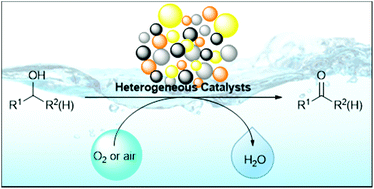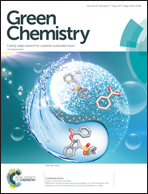A step forward towards sustainable aerobic alcohol oxidation: new and revised catalysts based on transition metals on solid supports†
Abstract
The oxidation of alcohols is a reaction under continuous investigation, due to the importance of oxidation products and the necessity to perform it in a more sustainable way with respect to traditional procedures. In particular, the combination of a metal catalyst with molecular oxygen or air represents one of the best alternatives in this field. New catalysts are continuously proposed in the literature, and it is not often easy to compare their performances owing to the great amount of examples reported. Heterogeneous catalysts represent the best solution to heavy metal contamination of the products, provided that leaching has not occurred. Moreover, they ideally should be recovered without deactivation and reused after reaction. The employment of air or oxygen in non-flammable solvents (ideally, water) is also highly appreciated, for safety reasons. We have tried in this review to focus on some very recent reports on solid supported transition metal catalysts that strive to follow these principles thus performing oxidation in a more sustainable way while guaranteeing an acceptable substrate scope for synthetic utility.



 Please wait while we load your content...
Please wait while we load your content...